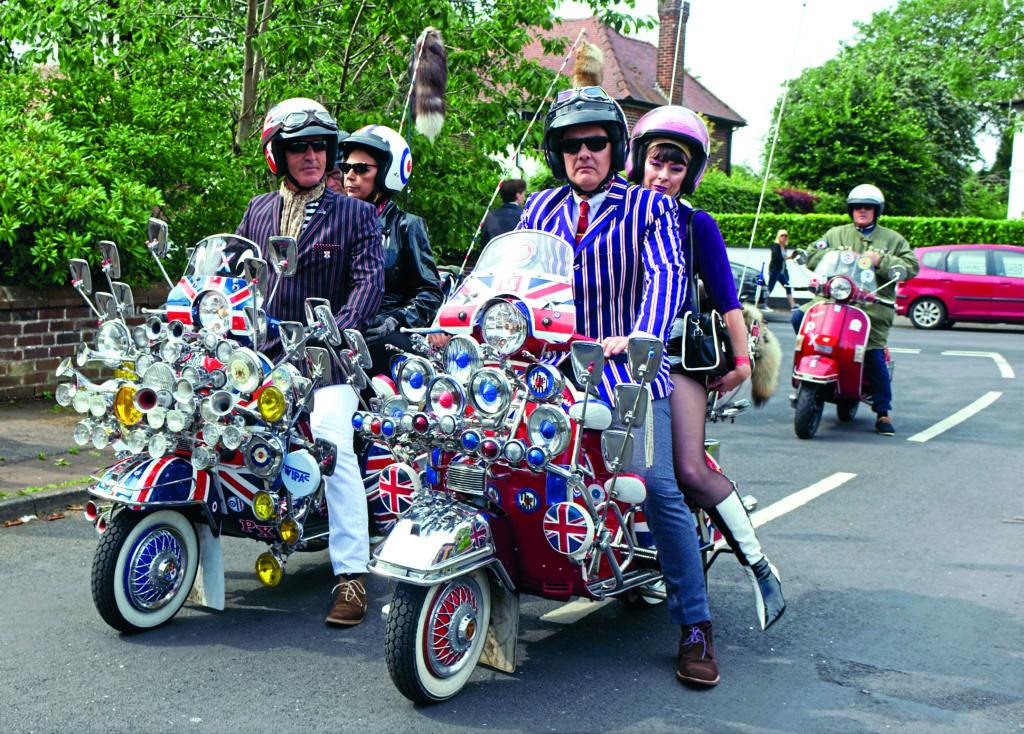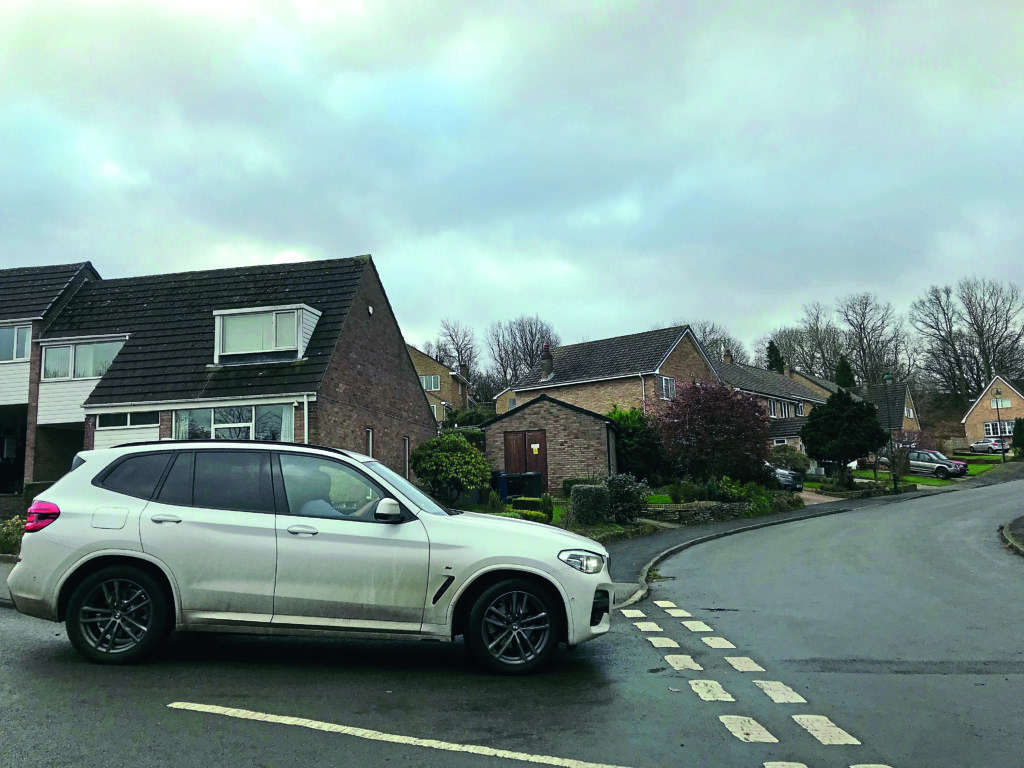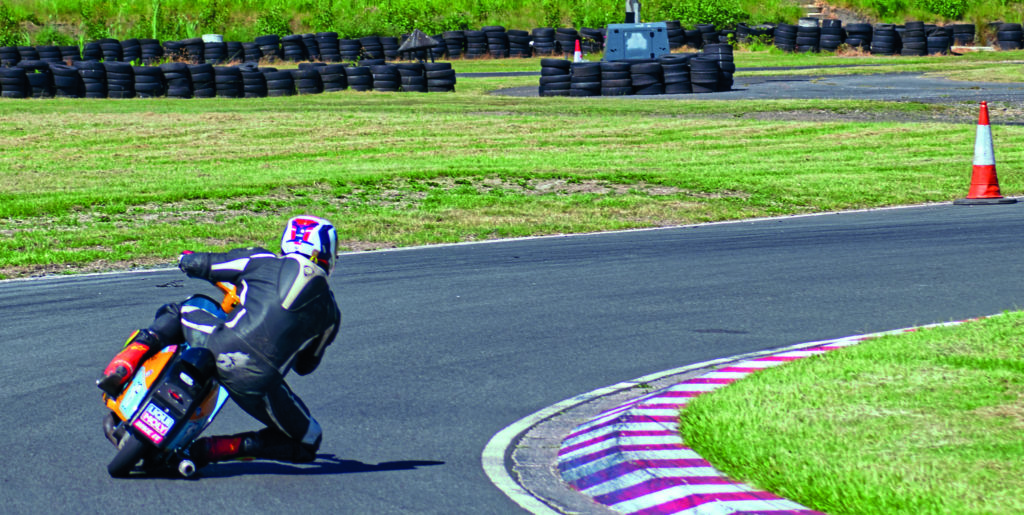Our tame BSSO rider Tom Shaw helps you keep safe in the face of some everyday road hazards by explaining how to focus on your riding.

Where do you look when you’re riding? The road ahead? The vehicle ahead? The other riders in your group?
Vision is a fundamental part of riding a motorcycle. It’s a basic riding skill that is often overlooked in favour of the more exciting aspects of riding we all enjoy practising (such as winding on the throttle). Out on track we have one main goal: ride as fast and as safely as possible. While this isn’t the case out on the open road, we can still take some skills from track riding and transfer them to make us a safer, smoother road rider.
While on the subject of vision, is your sight as good as it should be? If you need to wear glasses for riding, then wear them! If you’re not sure – get tested. To hold an ACU race licence we need to have our vision tested because it’s such an important part of riding.

The wheels on the bus Has the driver seen you? Approaching a junction your perspective changes; a car can look stationary when it’s just started to move, or appear to be moving when it’s standing still. A great tip is to keep glancing at its wheels, they’ll instantly tell you if it’s crawling forward or not.
Awareness
You have a huge field of vision. We don’t want to narrow that down to tunnel vision on a specific point on the road. Along with a well set-up pair, or in some cases 10 pairs, of mirrors, and using shoulder checks at the correct time we can build up a picture of what’s going on around us, and we need to constantly update this. Even while looking ahead, you should be using your peripheral vision to keep an eye on potential hazards. On the road we call this defensive riding, which ties in with hazard perception – the earlier you see it, the more time you have to deal with it. You should never neglect your mirrors or shoulder checks, they’re a huge part of riding safely.
Here’s a simple exercise that I want you to try next time you’re out for a ride. Give yourself a running commentary on the situation around you, say out loud what you can see. Describe each potential hazard as it appears. If you have been riding for a few years, this brings your natural defensive riding instinct from your subconscious to your conscious mind and in turn makes you pay more attention to it. Don’t believe me? Try it.

Nice arse Looking at the back end of the rider in front, as nice as his scooter, or parka, or paint job may be, is not where we want to be looking. By doing this you’re limiting your field of view and relying more on your peripheral vision. It only takes a split second for a major hazard to appear – be aware!
Cornering
Do you look into the corner? Do you look out of the corner? Around the corner? All these are right at different times of cornering.
Braking on a typical country lane sweeping right-hander should go something like this:
Initial assessment, how sharp is the corner? What’s the road camber like? How are the traffic conditions? How are the weather conditions sitting on the road surface? You need to answer all these questions by using your eyes to make the assessment.
Depending on the answers to these questions you may need to reduce speed before corner entry; the final place to look before tipping into the corner is to scan the road surface. Look for your typical loose gravel, wet manhole covers or anything that could potentially cause a loss of traction throughout the turn. This helps decide the correct line into the corner.
As you enter the corner, look for the exit, and if you can’t see the exit, look for the vanishing point – the furthest point around that corner that you can see. As you make your way around the bend the point will move around with you. Also use your peripheral vision and keep scanning the road surface in case you need to make any adjustments to your line.
Once you see the exit, aim for that and start to stand the bike back up and power on.

Common problems
Target fixation
If you’ve ever gone into a corner too hot and felt that primal fear surge through your veins, you’ll know your survival instinct is to look at the object you don’t want to ride into, but a motorcycle will always follow its rider’s eyes. The key to avoiding this is to pay more attention to the corner as you approach, make sure you’re looking and decide if you’re travelling at the correct speed before you enter the corner, not mid-corner.
Bike problems
We all know it’s not a good rideout without someone breaking down, but if you do suspect you have issues with your bike then it’s always best to pull up for a closer look. It’s surprising how many people ride along trying to inspect their bike which means they aren’t giving the road due attention.
Daydreaming
We’ve all done it: arguing with the Mrs, dreaming of a new bike, anything apart from our riding. To be a good safe rider your mind needs to be in a constant state of awareness; we achieve this by disciplining ourselves to stick to the fundamental principles of vision we’ve spoken about in this guide.
That brings us to the end of the tips – I hope that’s helped you along your journey.
Words: Tom/Rik
Illustrations: Rik



